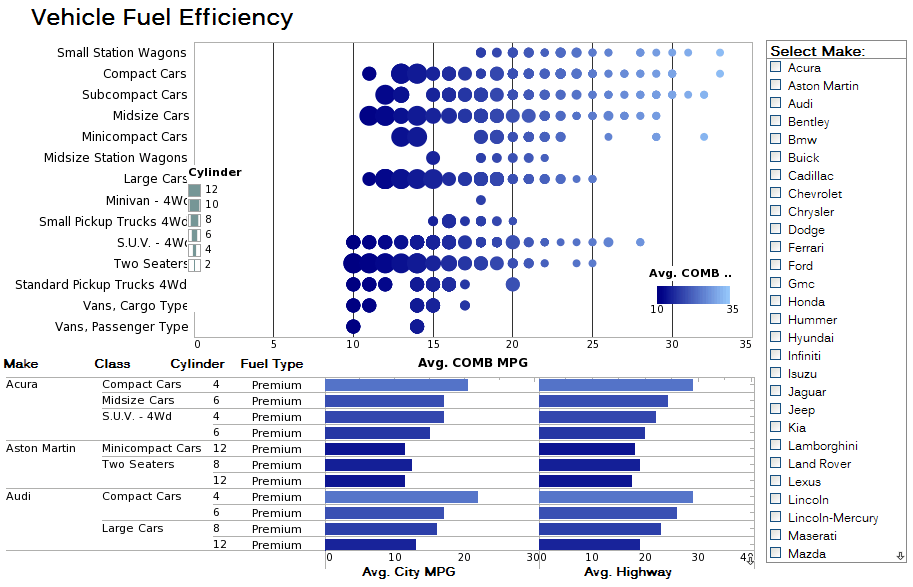Searching for how to create SQL reports?




What KPIs and Metrics Do Adjuvants Makers Use?
Key Performance Indicators (KPIs) and metrics are essential for adjuvant makers to measure and manage their performance, whether in the pharmaceutical or agricultural sectors. These KPIs and metrics help in tracking the effectiveness, safety, and market performance of adjuvants. Here are some common KPIs and their definitions along with their significance in performance management:
1. Research and Development (R&D) KPIs
- Time to Market: The duration from the initial development phase to the commercialization of the adjuvant.
- Significance: Reducing time to market is crucial for staying competitive and quickly meeting market demands.
- Number of Patents Filed: The number of patents filed related to new adjuvant formulations or technologies.
- Significance: A higher number of patents can indicate strong innovation and a competitive edge in the market.
- R&D Spending as a Percentage of Revenue: The proportion of revenue allocated to research and
development
activities.
- Significance: Indicates the company's commitment to innovation and long-term growth.
2. Production and Quality KPIs
- Yield Rate: The percentage of successfully produced batches of adjuvant relative to the total number of
batches produced.
- Significance: High yield rates indicate efficient production processes and lower waste, contributing to cost savings.
- Quality Control Pass Rate: The percentage of batches that pass quality control checks without requiring
rework.
- Significance: Ensures product reliability and consistency, which is critical for regulatory compliance and customer satisfaction.
- Manufacturing Cycle Time: The time taken to produce a batch of adjuvant from start to finish.
- Significance: Shorter cycle times improve production efficiency and can increase throughput.
3. Safety and Regulatory Compliance KPIs
- Regulatory Approval Time: The time taken to obtain regulatory approval for new adjuvants or new uses of
existing adjuvants.
- Significance: Faster approval times can lead to quicker market entry and competitive advantage.
- Number of Compliance Incidents: The number of incidents related to non-compliance with regulatory
standards.
- Significance: Fewer compliance incidents indicate robust regulatory adherence and lower risk of fines or sanctions.
- Adverse Event Rate: The frequency of reported adverse events associated with the use of the adjuvant.
- Significance: Lower adverse event rates reflect better safety profiles and can improve product trust and acceptance.
4. Market and Customer KPIs
- Market Share: The percentage of the market controlled by the company's adjuvants compared to competitors.
- Significance: Higher market share indicates strong market presence and customer preference.
- Customer Satisfaction Score (CSS): A measure of customer satisfaction based on surveys and feedback.
- Significance: High satisfaction scores suggest good product performance and strong customer relationships.
- Net Promoter Score (NPS): A measure of customer loyalty and the likelihood of customers recommending the
adjuvant to others.
- Significance: A high NPS indicates strong customer loyalty and can drive word-of-mouth marketing.
5. Financial KPIs
- Revenue Growth Rate: The annual growth rate of revenue from the sale of adjuvants.
- Significance: Indicates the company's ability to grow and expand its market reach.
- Gross Margin: The difference between revenue and the cost of goods sold, expressed as a percentage of
revenue.
- Significance: Higher gross margins reflect better cost control and profitability.
- Return on Investment (ROI): The financial return on investments made in developing and marketing
adjuvants.
- Significance: Measures the efficiency and profitability of investments.
6. Operational Efficiency KPIs
- Inventory Turnover Ratio: The number of times inventory is sold and replaced over a period.
- Significance: High turnover indicates efficient inventory management and strong sales.
- Order Fulfillment Cycle Time: The time taken to process and fulfill customer orders.
- Significance: Shorter cycle times improve customer satisfaction and operational efficiency.
7. Sustainability and Environmental KPIs
- Carbon Footprint: The total greenhouse gas emissions produced during the manufacturing of adjuvants.
- Significance: Lower carbon footprints reflect better environmental practices and can enhance the company's reputation.
- Waste Reduction Rate: The percentage reduction in waste generated during production.
- Significance: Indicates efficient use of resources and commitment to sustainability.
- Energy Efficiency: The amount of energy used per unit of production.
- Significance: Higher energy efficiency reduces costs and environmental impact.
What Are Adjuvants?
Adjuvants are substances that are added to vaccines, drugs, or agricultural products to enhance their effectiveness. They play a crucial role in various fields by boosting the immune response, improving drug delivery, or enhancing the performance of pesticides and fertilizers. Here's a detailed look at the different types and roles of adjuvants:
1. Pharmaceutical Adjuvants
In the context of vaccines, adjuvants are compounds added to increase the body's immune response to an antigen. Here are key points about pharmaceutical adjuvants:
- Purpose: They help in generating a stronger and longer-lasting immunity against the disease the vaccine targets. This can be particularly important for vaccines that use inactivated or subunit forms of pathogens, which may not elicit a strong immune response on their own.
- Examples: Aluminum salts (alum), oil emulsions, squalene-based compounds, and liposomes.
- Mechanism: Adjuvants work by various mechanisms, including the slow release of the antigen, stimulation of the immune system's cells, and enhancement of antigen uptake by dendritic cells.
2. Agricultural Adjuvants
In agriculture, adjuvants are used to enhance the effectiveness of pesticides, herbicides, fungicides, and fertilizers. They can improve the performance of these products in several ways:
- Purpose: To increase the efficacy of agrochemicals, reduce the amount needed, improve adherence to plant surfaces, and enhance penetration into plant tissues.
- Types:
- Surfactants: Reduce surface tension, helping the product spread more evenly and adhere better to plant surfaces.
- Stickers: Help the product stick to plant surfaces and resist being washed off by rain.
- Penetrants: Aid in the absorption of the chemical into the plant tissue.
- Drift Retardants: Reduce the drift of pesticides away from the target area.
- Buffering Agents: Maintain the pH of the spray solution to ensure optimal performance of the pesticide.
3. Other Uses of Adjuvants
- Cosmetics: In skincare products, adjuvants can improve the delivery and effectiveness of active ingredients.
- Diagnostics: Used in diagnostic assays to enhance the detection of specific biomolecules.
- Food Industry: Employed as emulsifiers, stabilizers, and preservatives to improve texture, shelf-life, and safety of food products.
Importance and Benefits
- Enhanced Efficacy: Adjuvants make vaccines and agricultural products more effective, often allowing for lower doses of the active ingredients.
- Cost-Effectiveness: By enhancing the performance, they can reduce the overall cost of treatments or agricultural inputs.
- Versatility: They can be tailored to specific needs, whether it's a stronger immune response in humans or better pesticide adherence in crops.
Considerations and Challenges
- Safety: Especially in vaccines, the safety of adjuvants is paramount. Extensive testing is conducted to ensure they do not cause adverse effects.
- Regulation: Both pharmaceutical and agricultural adjuvants are subject to stringent regulatory standards to ensure their safety and efficacy.
- Environmental Impact: Agricultural adjuvants must be evaluated for their potential environmental impact, including effects on non-target organisms and ecosystems.
Real-World Story: Adjuvants Increasing Agricultural Production in Brazil
Background
Brazil is one of the world's largest producers of agricultural products, including soybeans, corn, and sugarcane. The country's success in agriculture is partly due to its adoption of advanced agricultural technologies and practices. One such technology is the use of adjuvants in crop protection and enhancement.
The Challenge
In the early 2000s, Brazilian farmers faced significant challenges with pest control and nutrient absorption in their crops. The tropical climate, while favorable for crop growth, also created an ideal environment for pests and diseases. Additionally, the dense foliage of many crops made it difficult for pesticides and fertilizers to penetrate and be effective.
The Solution: Adoption of Agricultural Adjuvants
To address these challenges, Brazilian farmers began incorporating adjuvants into their crop management practices. Several types of adjuvants were used, including surfactants, spreaders, stickers, and penetrants.
-
Surfactants: These adjuvants helped reduce the surface tension of pesticide and fertilizer solutions, allowing them to spread more evenly across the leaves and better adhere to plant surfaces. This ensured a more uniform application and reduced the amount of chemicals needed.
-
Penetrants: These adjuvants enhanced the absorption of active ingredients into the plant tissues. For instance, they helped herbicides penetrate the waxy surface of leaves, making them more effective against weeds.
-
Stickers and Spreaders: These adjuvants improved the adhesion of pesticides and fertilizers to the plants, reducing wash-off due to rain and increasing the duration of effectiveness.
Implementation
The Brazilian Agricultural Research Corporation (Embrapa) played a crucial role in researching and promoting the use of adjuvants. They conducted extensive field trials to identify the most effective combinations of adjuvants for various crops and climatic conditions. The results were disseminated through agricultural extension services, workshops, and farmer cooperatives.
Outcomes
The implementation of adjuvants led to several positive outcomes for Brazilian agriculture:
-
Increased Crop Yields: The more effective application of pesticides and fertilizers led to healthier crops and higher yields. For example, soybean farmers reported yield increases of up to 15% due to improved pest control and nutrient uptake.
-
Reduced Chemical Usage: With better efficiency in the application of agrochemicals, farmers were able to reduce the overall amount of pesticides and fertilizers used. This not only lowered production costs but also minimized environmental impact.
-
Improved Resistance Management: By ensuring more uniform and effective pesticide application, adjuvants helped delay the development of pest resistance, thereby prolonging the efficacy of existing pesticides.
-
Environmental Benefits: The reduction in chemical usage and improved application efficiency led to less runoff and pollution, contributing to more sustainable agricultural practices.
Case Study: Soybean Production in Mato Grosso
In Mato Grosso, one of Brazil's largest soybean-producing regions, the adoption of adjuvants was particularly impactful. Farmers in this region faced severe infestations of Asian soybean rust, a disease that significantly reduces yields. By incorporating adjuvants into their fungicide applications, they achieved better coverage and penetration of the fungicide, effectively controlling the disease. As a result, soybean yields in Mato Grosso increased by an average of 10-15%, and the incidence of the disease was significantly reduced.



